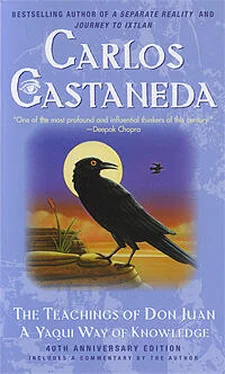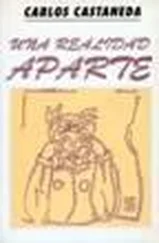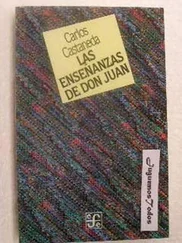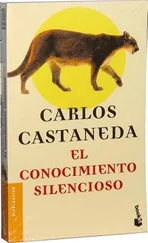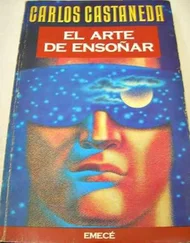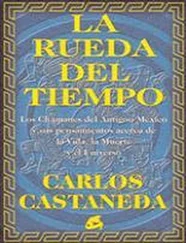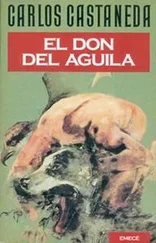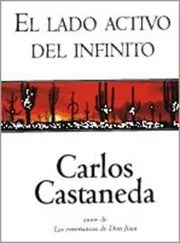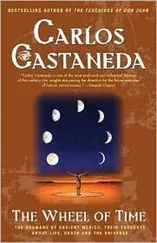He returned the mixture to the bag, closed the bag, tied it with a leather string, and put it under his shirt again.
'What kind of mixture is it?'
'There are lots of things in it. To get all the ingredients is a very difficult undertaking. One must travel afar. The little mushrooms | los honguitos] needed to prepare the mixture grow only at certain times of the year, and only in certain places.'
'Do you have a different mixture for each type of aid you need?'
'No! There is only one smoke, and there is no other like it.'
He pointed to the bag hanging against his chest, and lifted the pipe which was resting between his legs.
'These two are one! One cannot go without the other. This pipe and the secret of this mixture belonged to my benefactor. They were handed down to him in the same way my benefactor gave them to me. The mixture, although difficult to prepare, is replenishable. Its secret lies in its ingredients, and in the way they are treated and mixed. The pipe, on the other hand, is a lifetime affair. It must be looked after with infinite care. It is hardy and strong, but it should never be struck or knocked about. It should be handled with dry hands, never when the hands are sweaty, and should be used only when one is alone. And no one, absolutely no one, should ever see it, unless you mean to give it to somebody. That is what my benefactor taught me, and that is the way I have dealt with the pipe all my life.'
'What would happen if you should lose or break the pipe?'
He shook his head, very slowly, and looked at me.
'I would die!'
'Are all the sorcerers' pipes like yours?'
'Not all of them have pipes like mine. But I know some men who do.'
'Can you yourself make a pipe like this one, don Juan?' I insisted. 'Suppose you did not have it, how could you give me one if you wanted to do so?'
'If I didn't have the pipe, I could not, nor would I, want to give one. I would give you something else instead.'
He seemed to be somehow cross at me. He placed his pipe very carefully inside the sheath, which must have been lined with a soft material because the pipe, which fitted tightly, slid in very smoothly. He went inside the house to put his pipe away.
'Are you angry at me, don Juan?' I asked when he returned. He seemed surprised at my question.
'No! I'm never angry at anybody! No human being can do anything important enough for that. You get angry at people when you feel that their acts are important. I don't feel that way any longer.'
Tuesday, 26 December 1961
The specific time to replant the 'shoot', as don Juan called the root, was not set, although it was supposed to be the next step in taming the plant-power.
I arrived at don Juan's house on Saturday, 23 December, early in the afternoon. We sat in silence for some time, as usual. The day was warm and cloudy. It had been months since he had given me the first portion.
'It is time to return the weed to the earth,' he said suddenly. 'But first I am going to fix a protection for you. You will keep it and guard it, and it is for you alone to see. Since I am going to fix it I will also see it. That is not good, because, as I told you, I am not fond of the devil's weed. We are not one. But my memory will not live long; I am too old. You must keep it from the eyes of others, however, for so long as their memory of having seen it lasts, the power of the protection is harmed.'
He went into his room and pulled three burlap bundles out from under an old straw mat. He came back to the porch and sat down.
After a long silence he opened one bundle. It was the female Datura he had collected with me; all the leaves, flowers, and seedpods that he had stacked up before were dry. He took the long piece of root shaped like the letter Y and tied the bundle again.
The root had dried and shrivelled and the bars of the fork had become more widely separated and more contorted. He put the root on his lap, opened his leather pouch, and pulled out his knife. He held the dry root in front of me.
'This part is for the head,' he said, and made the first incision on the tail of the Y, which in an upside-down position resembled the shape of a man with his legs spread out.
'This is for the heart,' he said, and cut close to the joint of the Y. Next he chopped the tips of the root, leaving about three inches of wood on each bar of the Y. Then, slowly and patiently he carved the shape of a man.
The root was dry and fibrous. In order to carve it, don Juan made two incisions and peeled the fibres between them to the depth of the cuts. Nevertheless, when he came to details, he chiselled the wood, as when he shaped the arms and the hands. The final product was a wiry figurine of a man, arms folded over the chest and hands in a clasping position.
Don Juan got up and walked to a blue agave growing in front of the house, next to the porch. He took the hard thorn of one of the centre, pulpy leaves, bent it, and rotated it three or four times. The circular motion almost detached it from the leaf; it hung loose. He bit on it, or rather, he held it between his teeth, and yanked it out. The thorn came out from the pulp, bringing with it a white tail, two feet long. Still holding the thorn between his teeth, don Juan twisted the fibres together between the palms of his hands and made a string, which he wrapped around the figurine's legs to bring them together. He encircled the lower part of the body until the string was all used up; then very skilfully he worked the thorn like an awl inside the front part of the body under the folded arms, until the sharp tip emerged as though popping out of the figurine's hands. He used his teeth again and, by pulling gently, brought the thorn nearly all the way out. It looked like a long spear protruding from the figure's chest. Without looking at the figure any more, don Juan placed it inside his leather pouch. He seemed exhausted from the effort. He lay down on the floor and fell asleep.
It was already dark when he woke up. We ate the groceries I had brought him and sat on the porch for a while longer. Then don Juan walked to the back of the house, carrying the three burlap bundles. He cut twigs and dry branches and started a fire. We sat in front of it comfortably, and he opened all three bundles. Besides the one containing the dry pieces of the female plant, there was another with all that was left of the male plant, and a third, bulky one containing green, freshly cut pieces of Datura.
Don Juan went to the pig's trough and came back with a stone mortar, a very deep one that looked more like a pot whose bottom ended in a soft curve. He made a shallow hole and set the mortar firmly on the ground. He put more dry twigs on the fire, then took the two bundles with the dry pieces of male and female plants and emptied them into the mortar all at once. He shook the burlap to make sure that all the debris had fallen into the mortar. From the third bundle he extracted two fresh pieces of Datura root.
'I am going to prepare them just for you,' he said.
'What kind of a preparation is it, don Juan?'
'One of these pieces comes from a male plant, the other from a female plant. This is the only time the two plants should be put together. The pieces come from a depth of one yard.'
He mashed them inside the mortar with even strokes of the pestle. As he did so, he chanted in a low voice, which sounded like a rhythmless, monotonous hum. The words were unintelligible to me. He was absorbed in his task.
When the roots were completely mashed he took some Datura leaves from the bundle. They were clean and freshly cut, and all were intact and free of wormholes and cuts. He dropped them into the mortar one at a time. He took a handful of Datura flowers and dropped them also into the mortar in the same deliberate manner. I counted fourteen of each. Then he got a bunch of fresh, green seedpods which had all their spikes and were not open. I could not count them because he dropped them into the mortar all at once, but I assumed that there were also fourteen of them. He added three stems of Datura without any leaves. They were dark red and clean and seemed to have belonged to large plants, judging by their multiple ramifications.
Читать дальше
